LID Controls
LID Controls are low impact development practices designed to capture surface runoff and provide some combination of detention, infiltration, and evapotranspiration to it. They are considered as properties of a given subcatchment, similar to how Aquifers and Snow Packs are treated. GeoSWMM can explicitly model five different generic types of LID controls:
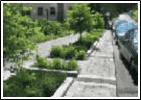
Bio-retention Cells are depressions that contain vegetation growing in an engineered soil mixture placed above a gravel drainage bed. They provide storage, infiltration and evaporation of both direct rainfall and runoff surrounding areas.

Rain Gardens are a type of bio-retention cell consisting of just the engineered soil layer with no gravel bed below it.
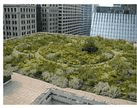
Green Roofs are another variation of a bio-retention cell that have a soil layer laying atop a special drainage mat material that material that conveys excess percolated rainfall off of the roof.
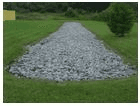
Infiltration Trenches are narrow ditches filled with gravel that intercept runoff from upslope impervious areas. They provide storage volume and additional time for captured runoff to infiltrate the native soil below.

Continuous Permeable Pavement systems are excavated areas filled with gravel and paved over with a porous concrete or asphalt mix. Block Paver systems consist of impervious paver blocks placed on a sand pea gravel bed with a gravel storage layer below.
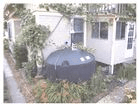
***Rain Barrels (or Cisterns) ***are containers that collect roof runoff during storm events and can either release or re-use the rainwater during dry periods.
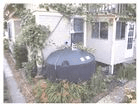
Rooftop Disconnection has downspouts discharge to pervious landscaped areas and lawns instead of directly into storm drains. It can also model roofs with directly connected drains that overflow onto pervious areas.

Vegetative Swales are channels or depressed areas with sloping sides covered with grass and other vegetation. They slow down the conveyance of collected runoff and allow it more times to infiltrate the native soil beneath it.
Bio-retention cells, infiltration trenches, and permeable pavement systems can contain optional drain systems in their gravel storage beds to convey excess captured runoff off of the site and prevent the unit from flooding. They can also have an impermeable floor or liner that prevents any infiltration into the native soil from occurring. Infiltration trenches and porous pavement systems can also be subjected to a decrease in hydraulic conductivity over time due to clogging.
Although some LID practices can also provide significant pollutant reduction benefits, at this time GeoSWMM only models the reduction in runoff mass load resulting from the reduction in runoff mass load resulting from the reduction in runoff flow volume. The following topics will provide a detail illustration on the using LID controls:
LID Representation
LID controls are represented by a combination of vertical layers whose properties are defined on a per-unit-area basis. This allows LIDs of the same design but differing areal coverage to easily be placed within different subcatchments in a study area.
During a simulation GeoSWMM performs a moisture balance that keeps track of how much water moves between and is stored within each LID layer. As an example, the layers used to model a bio-retention cell and the flow pathways between them are shown below:
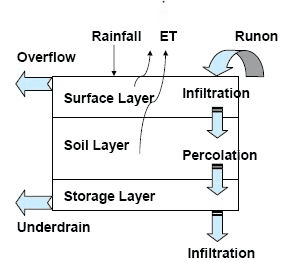
Fig.52: A bio-retention cell (Source: User Manual for EPA-SWMM 5.1)
The following table indicates which combination of layers applies to each type of LID (x means required, o means optional):
LID Type | Surface | Pavement | Soil | Storage | Drain | Drainage Mat |
|---|---|---|---|---|---|---|
Bio-retention Cell | x |
| x | x | o |
|
Rain Garden | x |
| x |
|
|
|
Green Roof | x |
| x |
|
| x |
Infiltration Trench | x |
|
| x | o |
|
Permeable Pavement | x | x | o | x | o |
|
Rain Barrel | x |
|
| x | x |
|
Rooftop Disconnection | x |
|
|
| x |
|
Vegetative Swale | x |
|
|
|
|
|
When a user adds a specific type of LID control object to a GeoSWMM project the LID Control Editor is used to set the design properties of each relevant layer (such as thickness, void volume, hydraulic conductivity, drain characteristics, etc.). These LID objects can then be placed within selected subcatchments at any desired sizing (or areal coverage) by editing the subcatchment’s LID Controls property.
LID Utilization
Utilizing LID controls within a GeoSWMM project is a two-phase process that:
-
creates a set of scale-independent LID controls that can be deployed throughout the study area,
-
assigns any desired mix and sizing of these controls to selected subcatchments.
Bear in mind that when LIDs are added to a subcatchment, the subcatchment’s Area property is the total area of the subcatchment (both non-LID and LID portions) while the Percent Imperviousness and Width parameters apply only to the non-LID portion of the subcatchment.
To implement the first phase, one selects the Hydrology | LID Controls category from the GeoSWMM object panel to add, edit or delete individual LID control objects. The LID Control Editor is used to edit the properties of the various component layers that comprise each LID control object.
For the second phase, for each subcatchment that will utilize LIDs, one selects the LID Controls property in the subcatchment’s Property Editor to launch the LID Group Editor. This editor is used to add or delete individual LID controls from the subcatchment. For each control added the LID Usage Editor is used to specify the size of the control and what fraction of the subcatchment’s impervious area it captures.
LID Placement
There are two different approaches for placing LID controls within a subcatchment:
-
place one or more controls in an existing subcatchment that will displace an equal amount of non-LID area from the subcatchment
-
create a new subcatchment devoted entirely to just a single LID practice
The first approach allows a mix of LIDs to be placed into a subcatchment, each treating a different portion of the runoff generated from the non-LID fraction of the subcatchment. Note that under this option the subcatchment's LIDs act in parallel -- it is not possible to make them act in series (i.e., have the outflow from one LID control become the inflow to another LID). Also, after LID placement the subcatchment's Percent Impervious and Width properties may require adjustment to compensate for the amount of original subcatchment area that has now been replaced by LIDs (Fig 53). For example, suppose that a subcatchment which is 40% impervious has 75% of that area converted to a porous pavement LID. After the LID is added the subcatchment's percent imperviousness should be changed to the percent of impervious area remaining divided by the percent of non-LID area remaining. This works out to (1 - 0.75)40 / (100 - 0.7540) or 14.3 %.
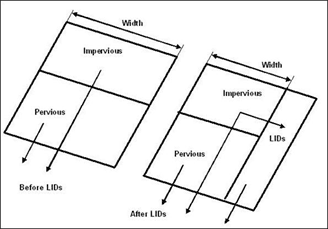
Fig. 53: Adjustment of Subcatchment parameters after LID replacement (Source: User Manual for EPA-SWMM 5.1)
Under this first approach the runoff available for capture by the subcatchment’s LIDs is the runoff generated from its impervious area. If the option to re-route some fraction of this runoff to the pervious area is exercised, then only the remaining impervious runoff (if any) will be available for LID treatment. Also note that Green Roofs and Roof Disconnection only treat the precipitation that fall directly on them and do not capture runoff from other impervious areas in their subcatchment.
The second approach allows LID controls to be strung along in series and also allows runoff from several different upstream subcatchments to be routed onto the LID subcatchment. If these sungle-LID subcatchments are carved out of existing subcatchments, then once again some agjustment of the Percent Impervious, Width and also the Area properties of the latter may be necessary. In addition, whenever an LID occupies the entire subcatchment the values assigned to the subcatchment’s standard surface properties (such as imperviousness, slope, roughness, etc.) are overridden by those that pertain to the LID unit.
Normally noth surface and drain outflows from LID units are routed to the same outlet location assigned to the parent subcatchment. However, one can choose to return all LID outflow to the pervious area of the parent subcatchment and/or route the drain outflow to a separate designated outlet. (When both of these options are chosen, only the surface outflow is returned to the pervious sub-area.)
LID Results
The performance of the LID controls placed in a subcatchment is reflected in the overall runoff, infiltration, and evaporation rates computed for the subcatchment as normally reported by GeoSWMM. GeoSWMM’s Summary Report also contains a section entitled LID Performance Summary that provides an overall water balance for each LID control placed in each subcatchment. The components of this water balance include total inflow, infiltration, evaporation, surface runoff, drain flow and initial and final stored volumes, all expressed as inches (or mm) over the LID’s area.
Optionally, the entire time series of flux rates and moisture levels for a selected LID control in a given subcatchment can be written to a tab delimited text file for easy viewing and graphing in a spreadsheet program.
